Comparison Portal
Authors: Bohdan Garchu, Jakob Schödl
Functionality
Use the tabs at the top of the Comparison Portal to toggle between two comparison modes:
- Country Comparison: detailed comparison of up to 5 countries against each other
- Region Comparison: comparison of FCS and rCSI values between some or all of the regions of a single country
Both tabs consist of a Select component and an Accordion. The select component allows users to select the countries and regions that should be compared. When a country is selected the accordion gets updated with corresponding information. While updating, every accordion item shows a loading spinner. An accordion item can be expanded to show more detailed information.
Only countries where FCS data is available are shown in the list. Comparisons of other countries are not supported.
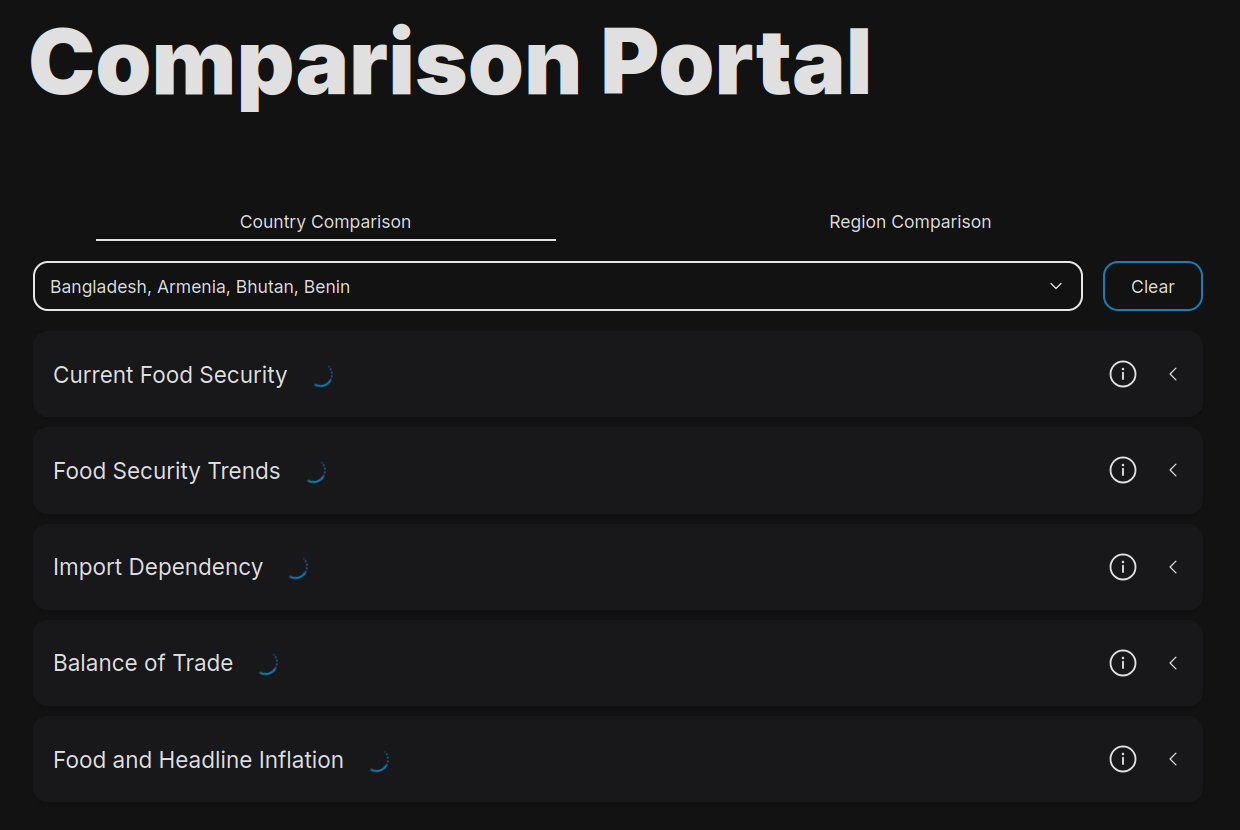
Bar charts
Categorical data like population, people with insufficient food consumption, and import dependency is displayed using a bar chart.
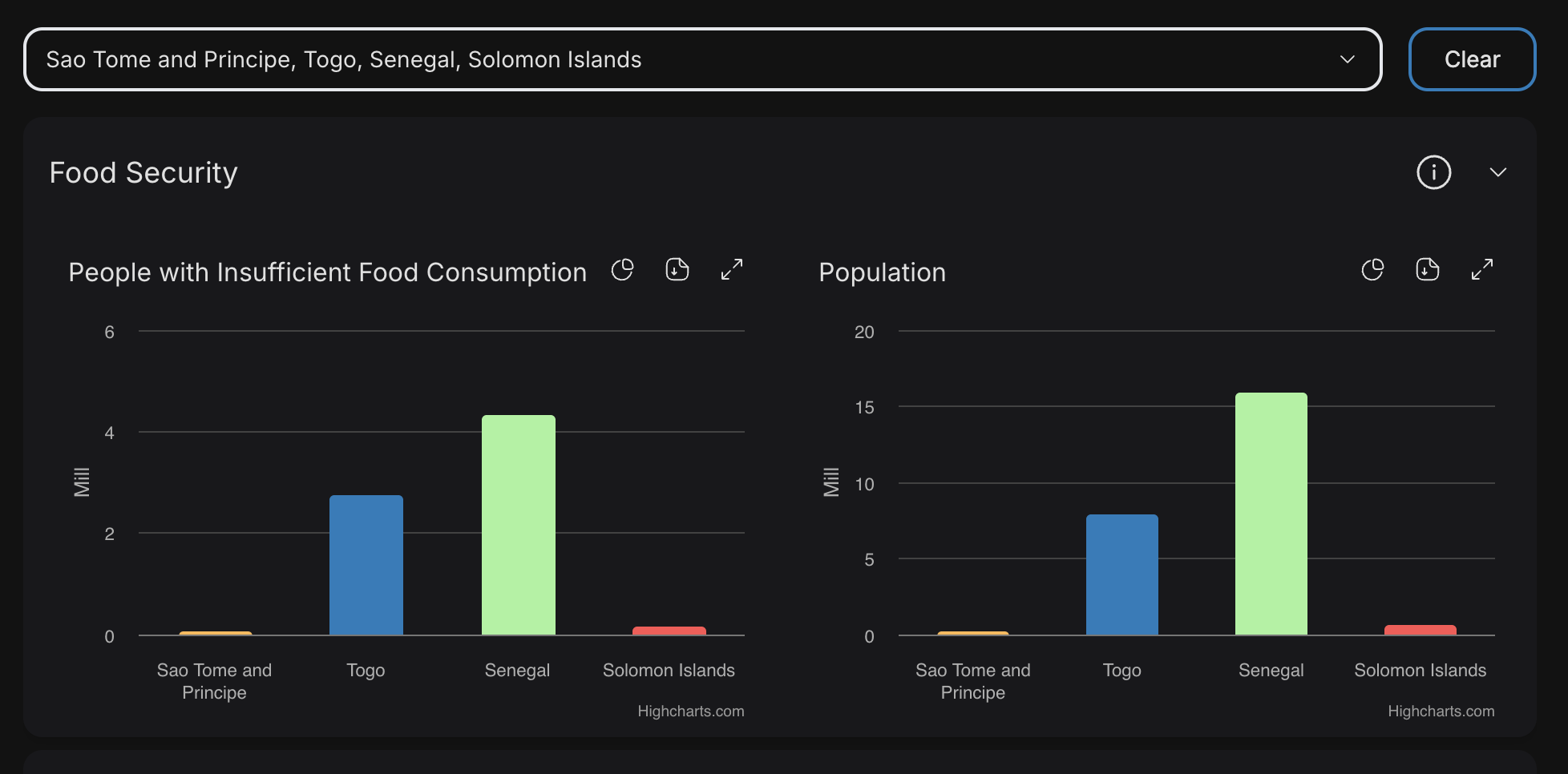
Line charts
If comparison data is continuous, it is plotted on a line chart. Areas with lighter colors denote error margins of error as given in the underlying data.
If more than 5 regions are compared, error margins are hidden as they would likely make the chart look crowded, affecting the comprehensibility.
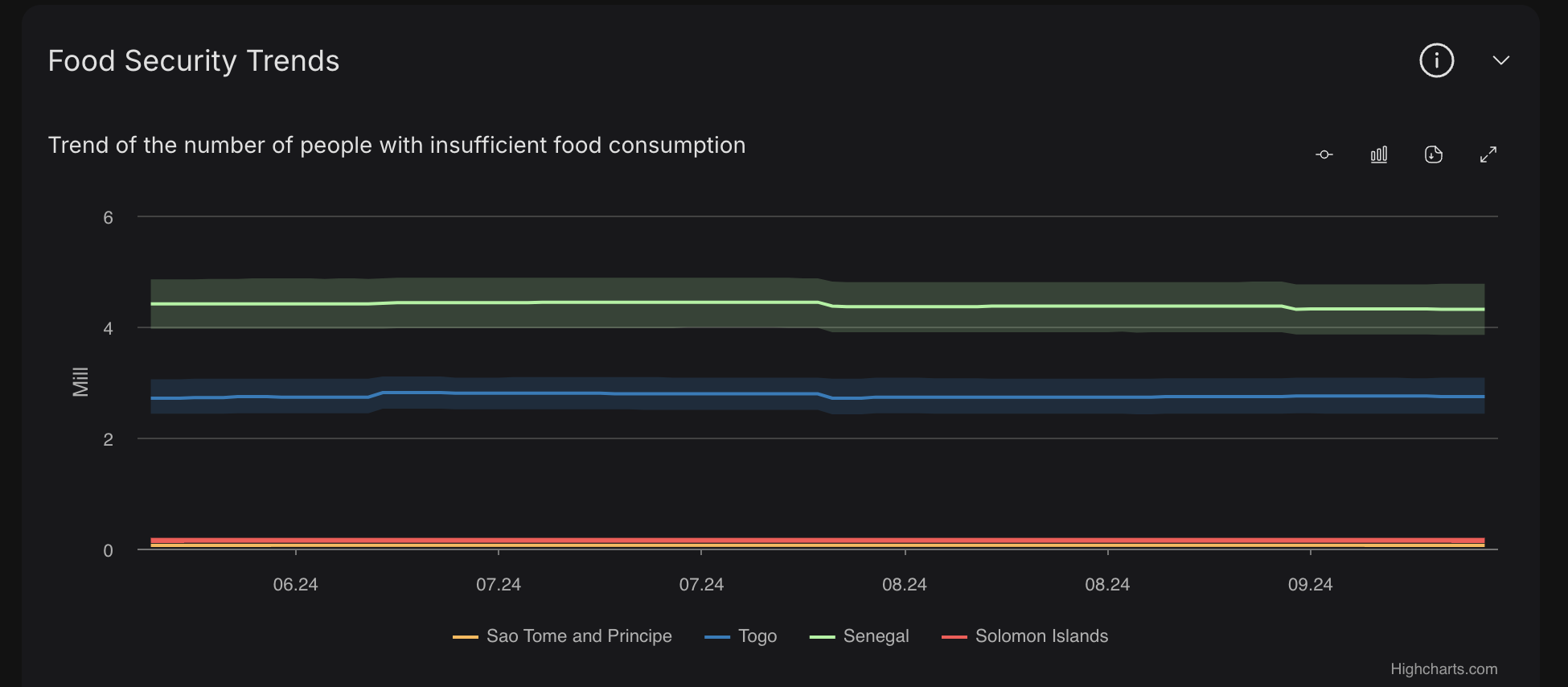
Error Handling
If an error occurs while fetching data for a country, a snackbar is displayed. Then the country is disabled in the selection dropdown.
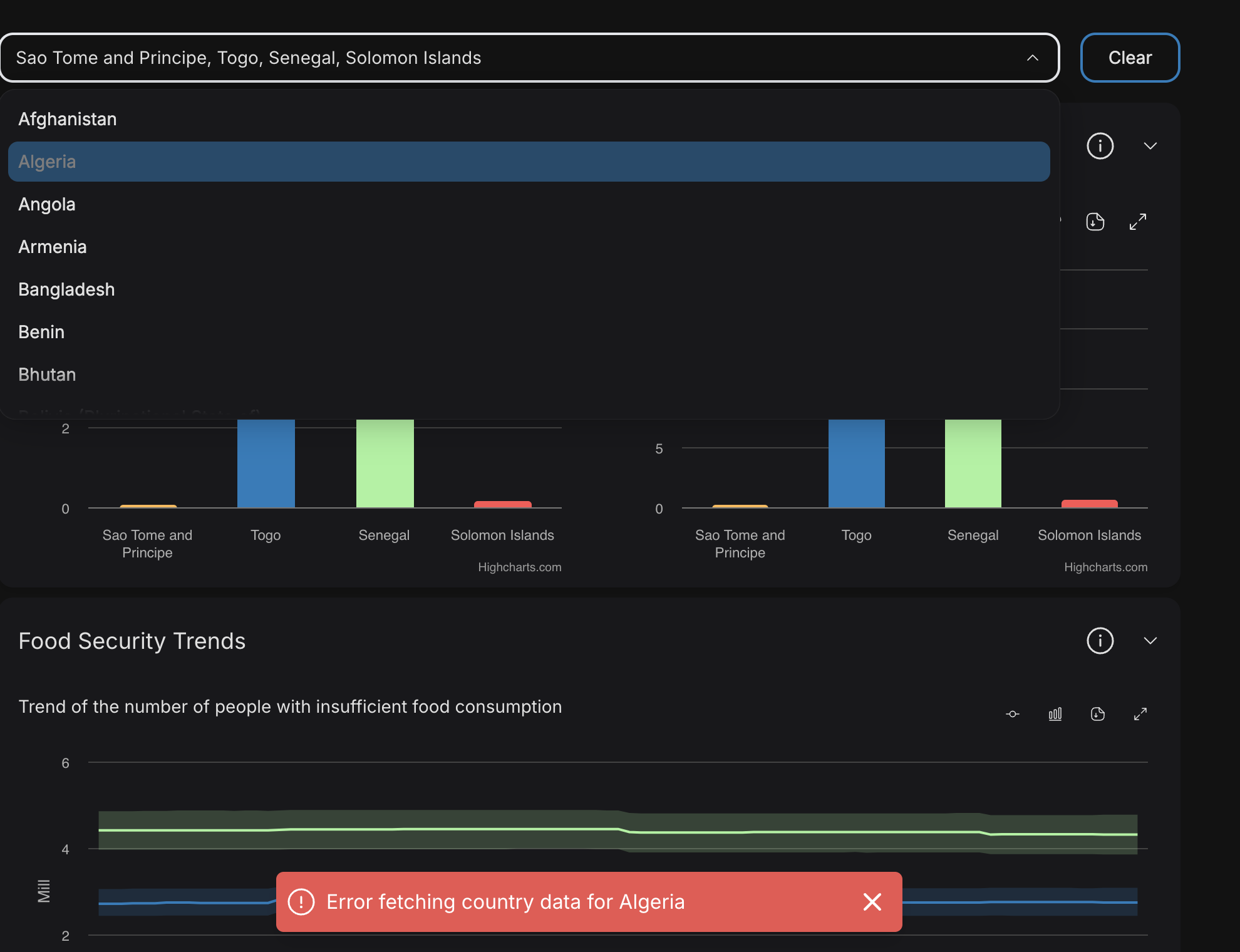
In addition, if a country or region has no data for a chart, a corresponding alert is displayed.
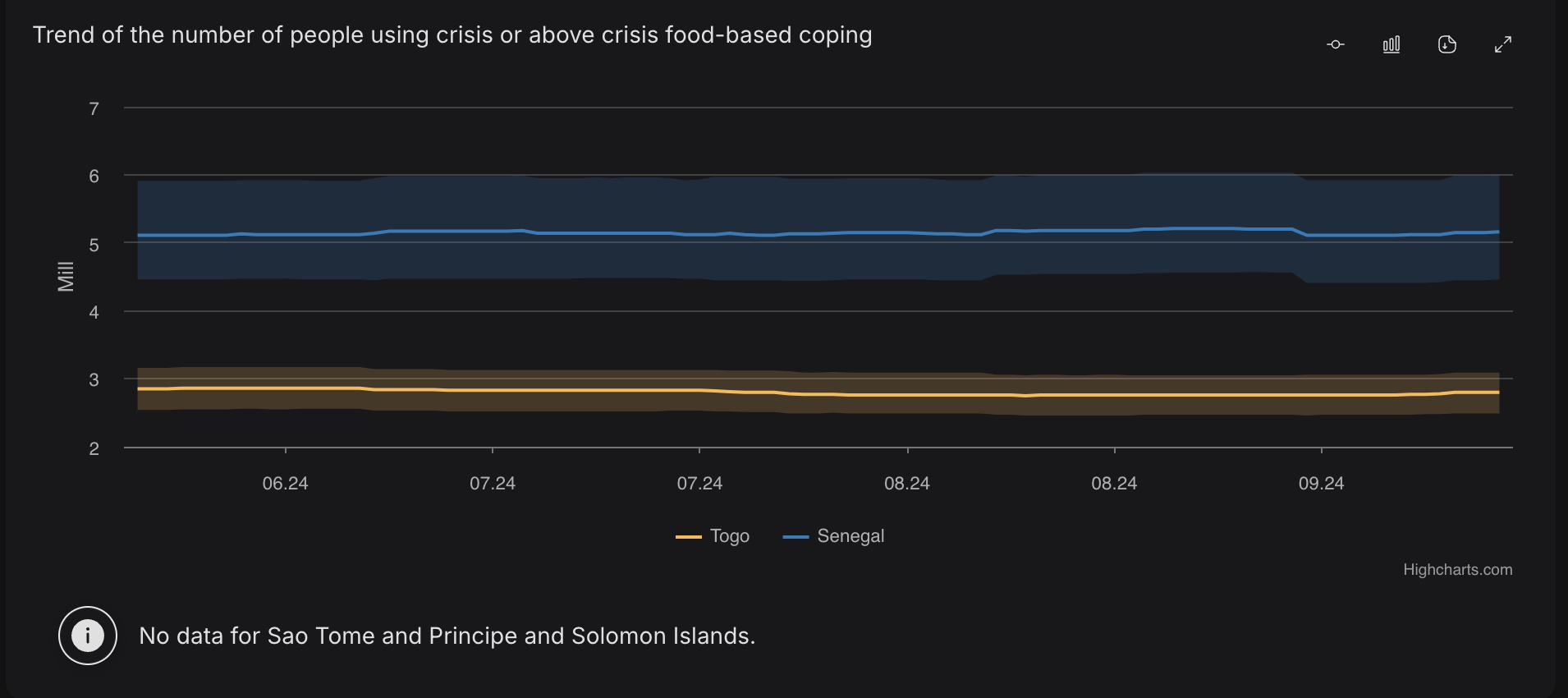
If data for all countries or regions for a chart is missing, an error message is displayed on that chart.

Technical Details
Data Fetching (Country Comparison)
To enable selection only from countries that have FCS data, the page needs to fetch global FCS data from
/adm0/fcs.json. In addition, country map data is fetched from /adm0data.json so that there is a adm0_id and iso3
code for every country. Both of these calls are executed on the server side in order to cache the data and avoid
fetching it on every request. While the data is being fetched, a skeleton is displayed. This is implemented using Reacts
Suspense and Skeleton component from NextUI.
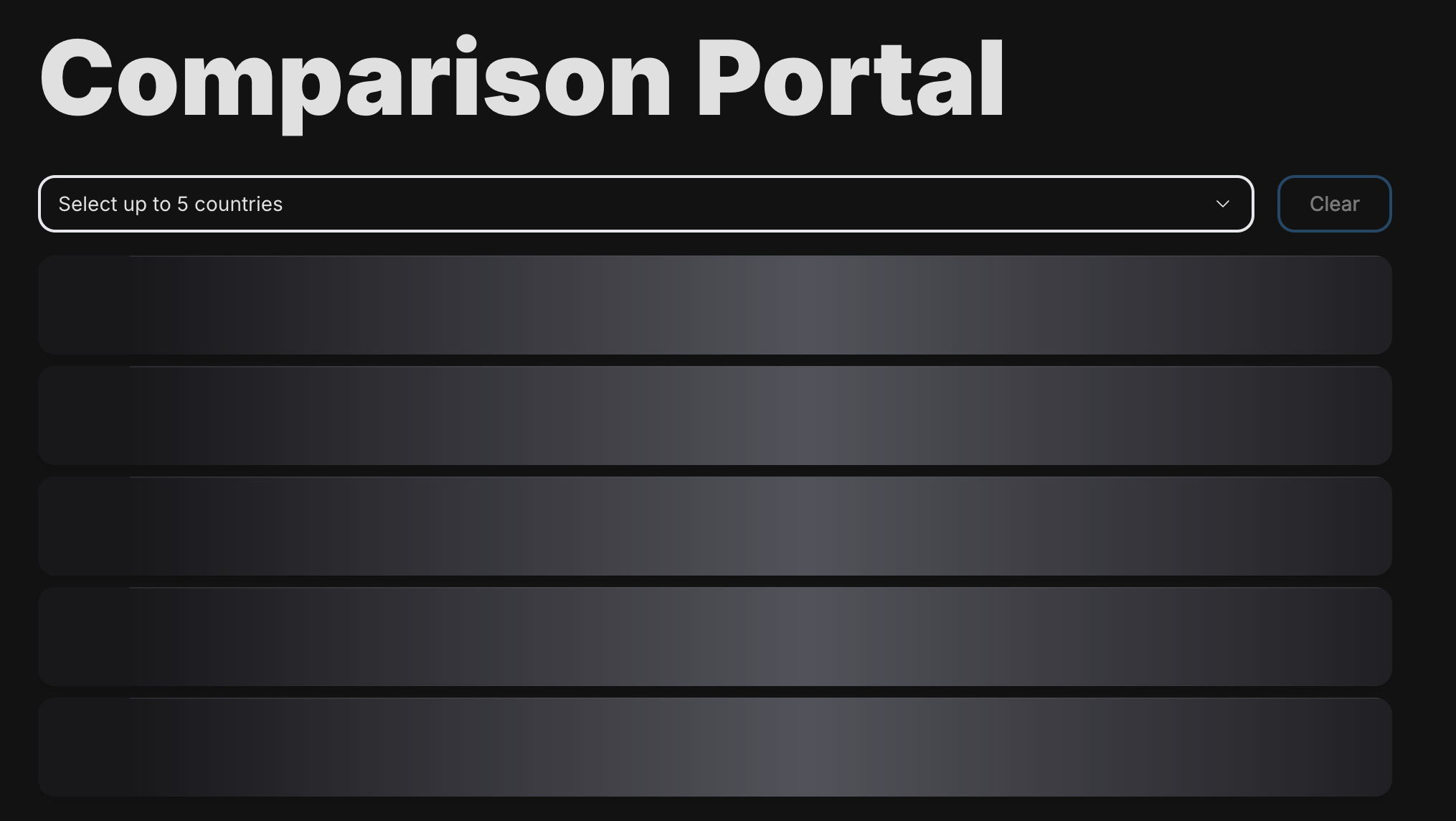
In order to get data for a selected country, the page needs to fetch data from two endpoints. To utilize client-side
caching, respective custom hooks are used, located in the countryHooks.ts file:
useCountryDataListQuery: fetches/adm0/${countryId}/countryData.jsonuseCountryIso3DataListQuery: fetches/iso3/${countryCode}/countryIso3Data.json
They accept an array of country IDs and country codes respectively and return the data for each country. In addition, they accept a callback function for the case when an error is returned for a specific country. The hooks are implemented using useQueries hook from Tanstack Query library. It allows to execute a variable number of queries in parallel and return the results in an array.
Data Fetching (Region Comparison)
After selection of a country for region comparison, the useRegionDataQuery hook is used to fetch additional country
data from /adm0/${countryId}/adm1data.json, which includes information on a single countries' regions (including e.g.
historic FCS data). During the fetch, a Skeleton is shown.
When opening a link to the Comparison portal where regions are specified, the skeleton might show an additional accordion item. This is to avoid layout shifts in case a warning as below will be shown above the other items.

Similar to above, the implementation is based on the Tanstack Query library. When changing the region selection, no further fetch is necessary.
Query parameters
Selected countries, regions and the current tab are stored in the URL query string so that our users can share the comparison with others. Here is an example of a URL containing both country and region selections: https://wfp-hungermap.netlify.app/comparison-portal?tab=country®ionComparisonCountry=43®ions=all&countries=23%2C29
| Parameter | Example | Explanation |
|---|---|---|
tab | country, region | Viewed comparison type |
countries | 31,29,35 (represented as 31%2C29%2C35) | Selected country IDs for country comparison, comma-seperated (%2C) |
regionComparisonCountry | 31 | Selected country ID for region comparison |
regions | 624,622,628 (represented as 624%2C622%2C628), all | Selected region IDs for region comparison, comma-seperated (%2C) |
In order to keep the selections on the page in sync with query parameters, custom hooks for each of them were
implemented in queryParamsHooks.ts.
Those return the currently selected value (either using the UI or using query params) and a function to update them (in
both UI and query), similar to the array [value, setValue]
returned by an ordinary useState() call.
Updating query params takes some time. Because of that, the implemented hooks pair them with a state value that can get updated instantly.
Limitations
The number of compared countries is limited to five. In order to increase this limit, the COUNTRY_LIMIT constant can
be updated in CountrySelection.tsx.
Region comparison only supports regions within the same country by now. The number of compared regions is not limited, although performance and comprehensibility of the charts might suffer for larger selection. If 30 or more regions are selected, a warning is shown.
At time of writing, Uganda is the country with the highest number of regions (112).